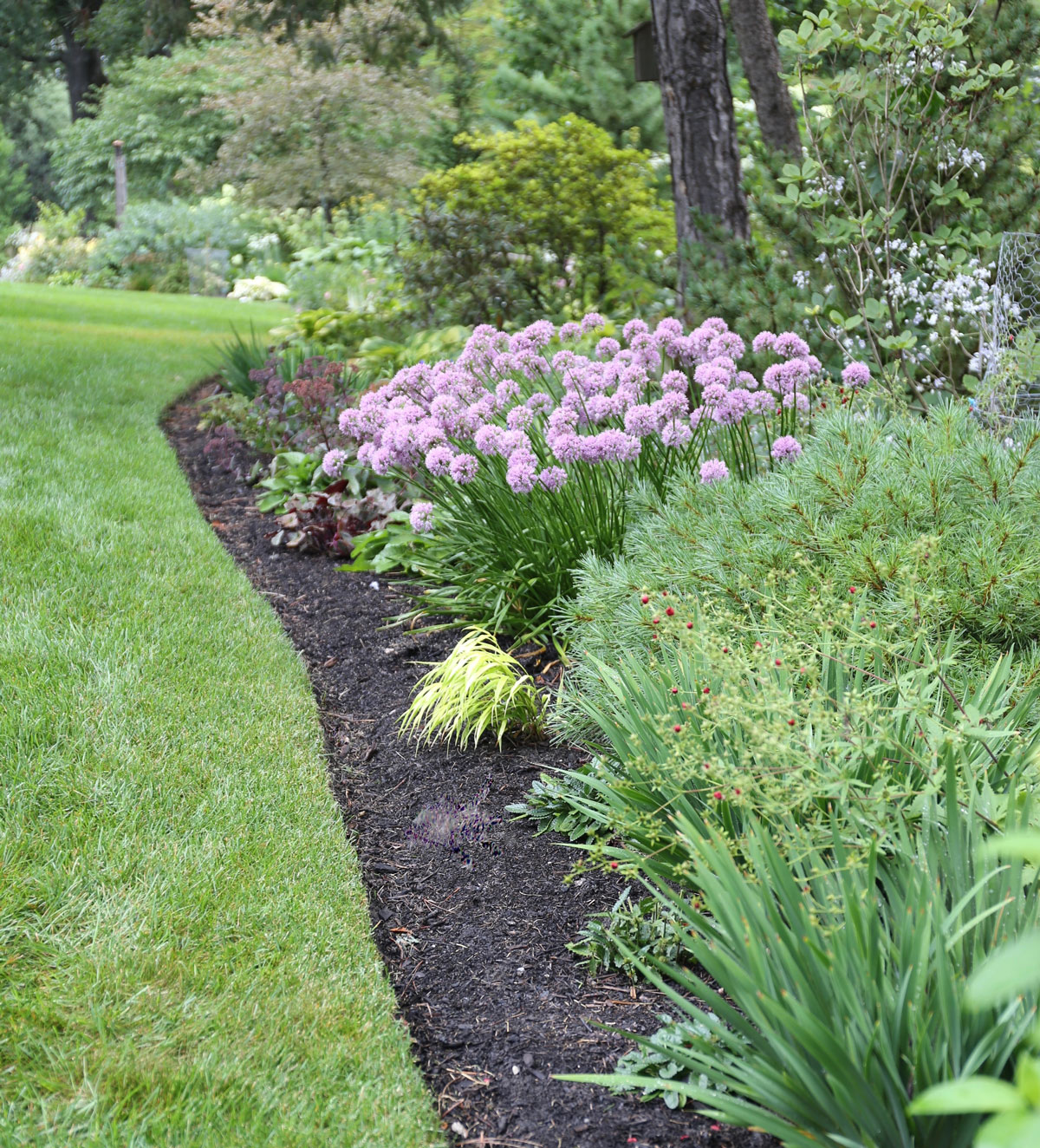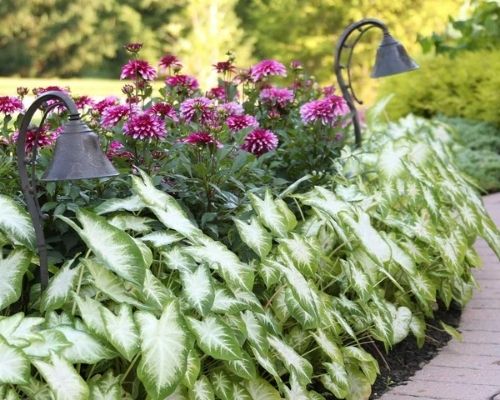How to Select the Right Mulch for Your Garden
There are many good reasons for mulching your flower garden. Covering the soil with a layer of mulch will minimize weed growth, reduce moisture loss and moderate soil temperature. In the winter, a layer of mulch helps protects perennials from extreme cold by insulating the root zone.
In flower gardens, mulch can also have an important aesthetic role. Just as a neatly clipped lawn sets off flower beds, the right mulch helps each plant look its best and makes the entire garden look more pulled together.
Choose an Effective Yet Attractive Mulch
In a vegetable garden, you can mulch with just about anything -- from carpet remnants to black plastic. Flower gardens call for a different approach. The best mulch for flower gardens is neutral in color so it doesn’t compete with the flowers. It also needs to be finely textured so you can easily spread it around plants of many different shapes and sizes. The best mulching materials for flower gardens include:
Compost (made from kitchen and garden scraps or well-rotted animal manure)
Leaf Mold (leaves that are at least a year old and partially decomposed)
Shredded leaves
Cocoa shells or buckwheat hulls
Salt hay or seaweed
All of these recommended mulches are organic, which means they will gradually decompose and enrich the soil. They also need to be refreshed annually. Each time you apply fresh mulch, check the depth. If it’s more than about 2” thick, it can start to deflect rain and overhead irrigation, depriving plant roots of both moisture and oxygen. Thick mulch also creates an appealing environment for voles and other pesky rodents.
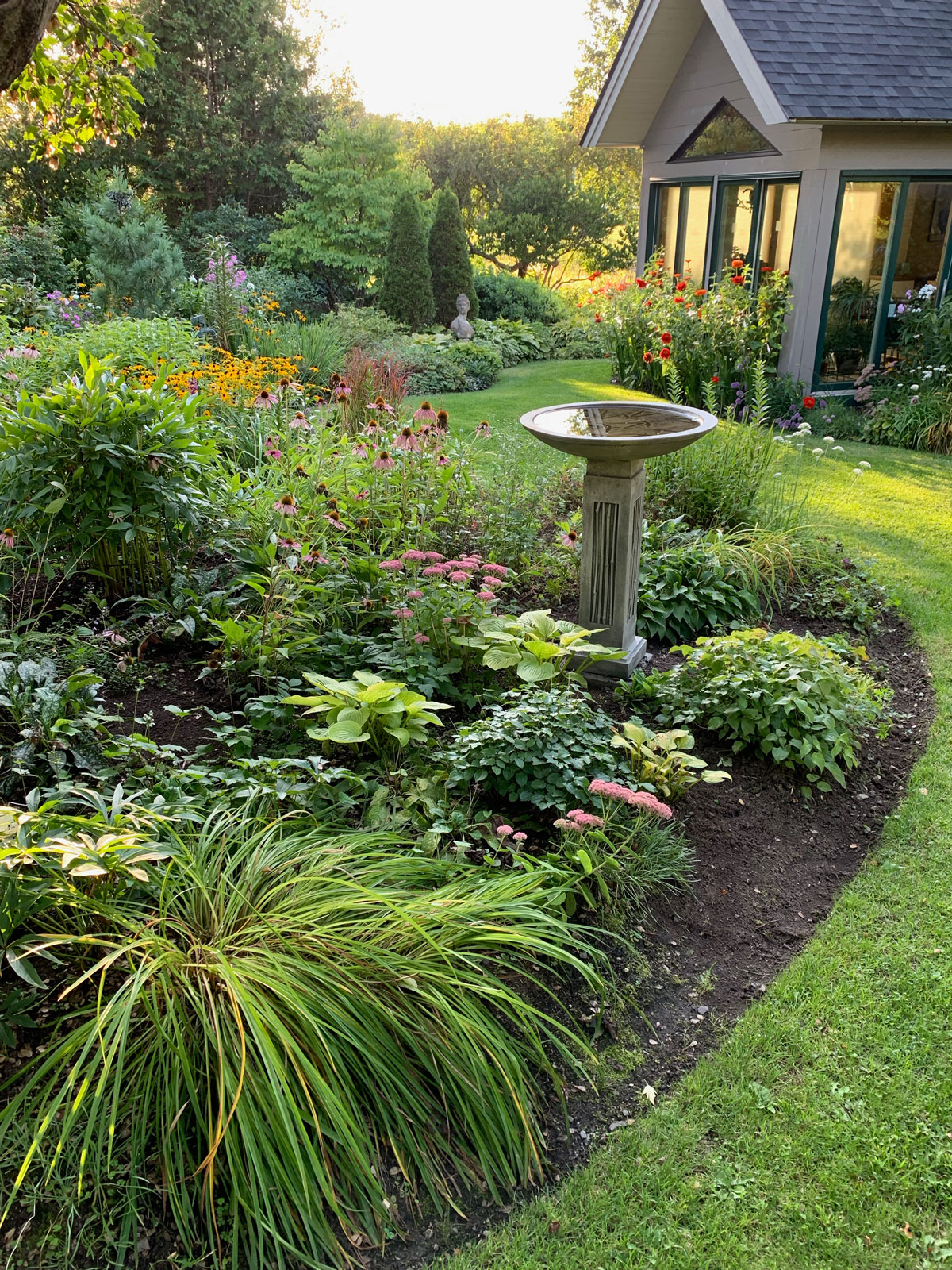
Some Mulches to Avoid
Wood chips or nuggets, shredded bark mulch and sawdust are generally not recommended for flower gardens. These high carbon materials may be OK for landscaping, but if they used around herbaceous perennials and annuals, your plants will suffer. These materials can alter soil pH and, in order to break them down, microbes “steal” nitrogen from the soil, depriving your plants of this important nutrient.
Pine needles (sometimes called pine straw) are an attractive mulch, but naturally acidic. Reserve them for mulching acid loving-plants such as azaleas and rhodendrons. Grass clippings can be tricky. Even if they’re dry when applied as a mulch, they may fuse into a mat that inhibits the movement of air and water. Best to leave them on your lawn. Well-rotted straw is a good mulch, but it’s clumpy. This makes it difficult to spread and the overall effect looks rough.
Polyester weed fabric and black plastic are also not recommended for flower beds. These materials are fine for covering large landscaped areas but are difficult to use in a densely planted flower bed. Shallow-rooted perennials also dislike fabric and plastic mulch. Shredded rubber mulch, lava rocks and stone are also not recommended because no matter how careful you are, they eventually get mixed into the soil.
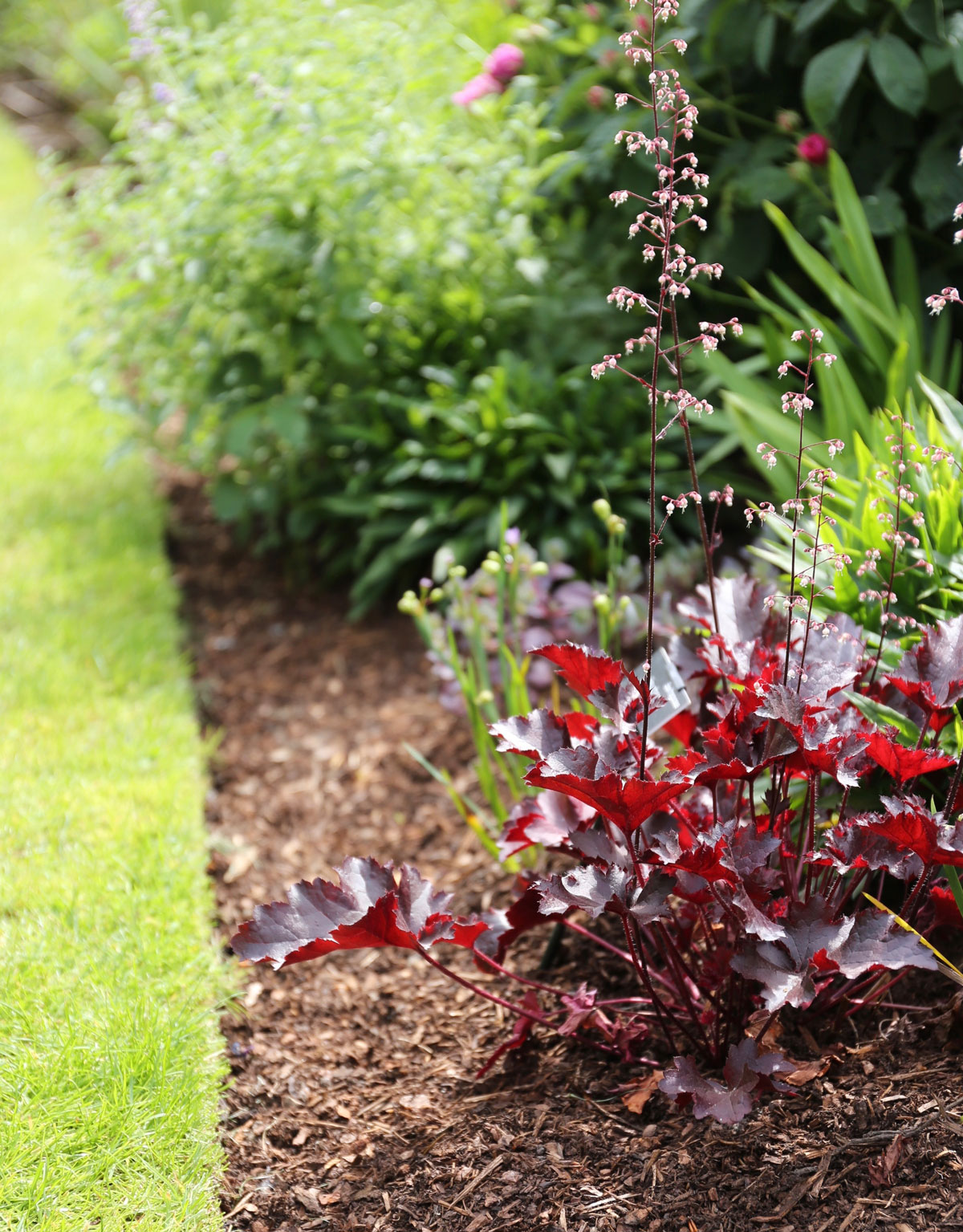
Other Factors to Consider When Choosing Mulch
WEATHER. In hot climates, plants benefit from a loose, relatively dry mulch such as shredded leaves. These materials trap air and help insulate roots from extreme heat. If you live where summers are cool and rainy, compost and leaf mold are good options. They don’t get soggy in wet weather, so you’ll have fewer problems with fungal disease and pests like slugs and earwigs. If you live in a cold climate, you may want to give the soil some time to warm up in the spring before applying mulch.
SOIL TYPE. If the soil in your flower garden is heavy and poorly drained, don't cover it up with a thick, moisture-retentive mulch. Both the soil and the roots of your plants need to breathe. If your soil is sandy or stony, there’s even more important to mulch with compost or shredded leaves. As these materials decompose, they will add nutrients and organic matter to the soil and help improve water retention. It’s also good to know if the soils in your area tend to be acidic or alkaline. This may influence the types of mulch you use.
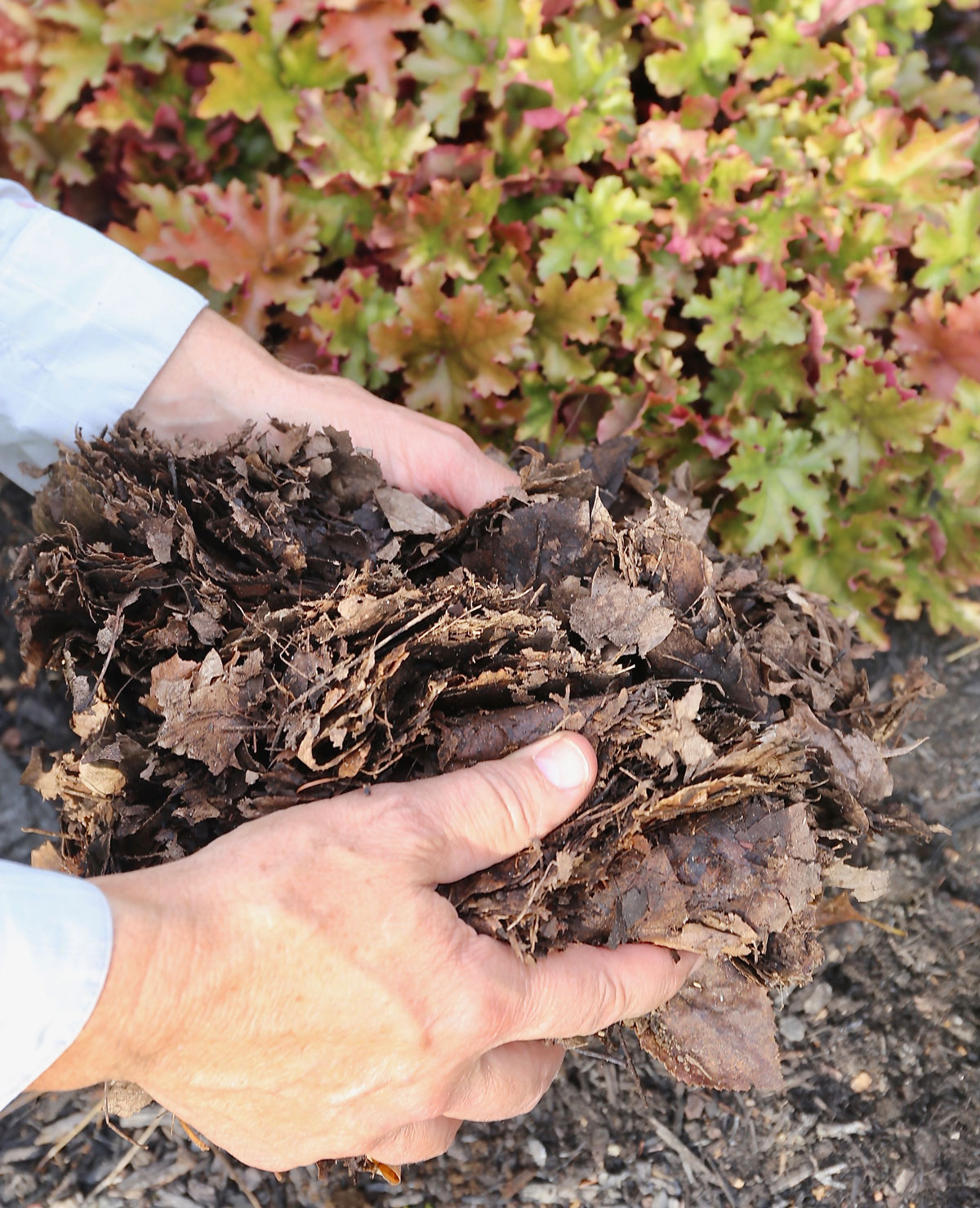
Tips for Mulching Flower Gardens
When mulching around perennials, keep the material an inch or two away from the crown of the plant so moisture doesn’t get trapped against the stems and cause disease problems.
Creeping or low-growing perennials can function as a living mulch. Examples include creeping phlox, candytuft, ajuga and liriope.
In a densely planted flower garden, there’s little need for mulch. Once the plants have leafed out they create a canopy of foliage that shades the soil, helping to reduce moisture loss and control weed growth.
Be especially careful when mulching around peonies. These perennials have stem-roots that lie just barely below the soil surface. If these surface roots are covered with more than 1 or 2” or soil or mulch, your peonies will have fewer or possible no flowers.
Learn more here: How to Control Weeds in Your Flower Garden
